-
04 Mar 2025
WASHINGTON WATCH: A Maritime Reflection on the First 30 Days

The first thirty days of the new Trump Administration have brought sweeping changes throughout the federal government. We take a pause to assess where things stand for maritime stakeholders and what may be coming next in Washington, DC, for our industry.A Maritime DirectiveFor those that work in the U.S maritime space, it is axiomatic to state that all aspects of the maritime industry are critical to our national security. U.S. flag vessels and merchant mariners not only support U.S.
-
26 Dec 2024
WASHINGTON WATCH: Looking Forward and Aft at the Maritime Political Landscape
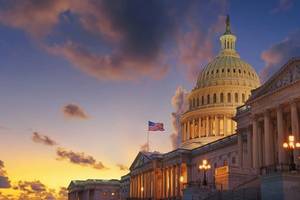
With the election (largely) settled, we turn our attention to the challenges and opportunities that the new Administration and Congress hold for maritime stakeholders.Maritime Challenges Out (and at) the GatesOn October 3, 2024, the United States Maritime Alliance (USMX) and the International Longshoremen's Association, AFL-CIO (ILA) reached a tentative agreement on wages, extending their Master Contract until January 15, 2024.
-
30 Sep 2024
US Election Awash with Maritime Implications

With a critical election fast approaching – in which the Executive Branch, House and Senate are all up for grabs – it is essential to consider the election’s potential impact on the maritime industry before heading to the voting booth.Maritime impact on the electionAt the time of writing, we are two weeks away from the expiration of the current six-year master agreement between the United States Maritime…
-
16 Jul 2024
Maritime Implications of Recent US Supreme Court Rulings

In recent weeks the U.S. Supreme Court has fundamentally changed the ways that laws are interpreted and enforced by federal agencies. These decisions will have far-reaching impacts on heavily-regulated sectors, such as the U.S. maritime industry, potentially altering the balance of power between stakeholders and federal regulators.Civil penalties require 7th Amendment protectionsOn June 27, 2024, in SEC v.
-
06 Jun 2024
Congress Raises the National Security Alarm on Shipbuilding
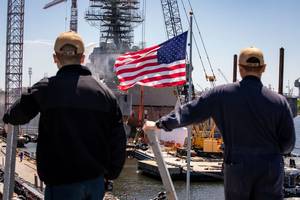
A bipartisan, bicameral group is emerging in Congress as the thought leaders for future maritime policy. On January 30, 2024, Senator Mark Kelly (D-AZ) and Representative Mike Waltz (R-FL-6) led a letter to President Biden, joined by 17 other members of Congress, urging the White House to embrace a “bold and clear vision” for the future of U.S. sea power. Among other recommendations – including establishing…
-
16 May 2024
No Shortage of Good Ideas to Address the Mariner Shortage

The U.S. mariner shortage continues to be a strategic national security concern for all maritime industry stakeholders. So what can the Maritime Administration (MARAD) and U.S. Coast Guard (USCG) do to address the problem?Subcommittees on Readiness, and Seapower and Projection Forces on the “Posture and Readiness of the Mobility Enterprise.” Both Administrator Phillips and Gen. Van Ovost focused on the mariner shortage as a key readiness concern. Gen Van Ovost stated, “The U.S.
-
26 Feb 2024
Will 2024 Settle the Turbulence of US Offshore Wind?
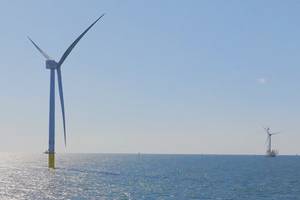
There is no denying that 2023 was a challenging year for the U.S. offshore wind market. Citing macroeconomic factors including high inflation, rising interest rates, and supply chain bottlenecks, Ørsted announced on October 31 that they were ceasing the development of the Ocean Wind 1 and Ocean Wind 2 projects, which were scheduled for construction off the coast of New Jersey. Unfortunately, the troubling news has continued into the new year…
-
18 Dec 2023
Ask What Your Government Can Do For Your Industry (A 2023 Retrospective)
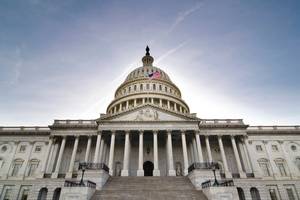
John F. Kennedy’s famous locution, “Ask not what your country can do for you, but you can do for your country” remains the rallying call for civic action and public leadership. The message remains foundational to the success of the United States, particularly as we head into an election year that once again appears to be filled with divisiveness and vitriol. That said, before we flip the calendar,…
-
09 Oct 2023
The Headwinds of US Offshore Wind Development
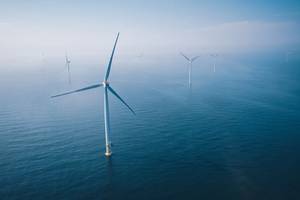
On March 29, 2021, President Biden announced his ambitious plan to deploy 30 gigawatts (GW) of offshore wind power – enough energy to power 10 million U.S. homes – by 2030. The plan would leverage authorities under the Department of Interior, Energy, and Commerce to guide “more than $12 billion per year in capital investment in projects on both U.S. coasts, create tens of thousands of good-paying, union jobs…
-
14 Aug 2023
NSMV: The Model for the Future of Government Shipbuilding
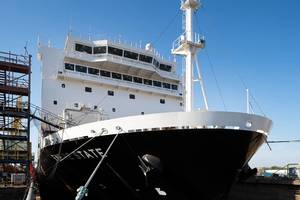
At the time of publication, the first National Security Multi-Mission Vessel (NSMV), the Empire State VII, is steadily advancing towards its final delivery to the Maritime Administration (MARAD) and SUNY Maritime College. Let’s be clear—this is a huge win, not only for MARAD, its vessel construction manager TOTE Services, the shipbuilder Philly Shipyard, and SUNY Maritime, but for the future of government shipbuilding.To put this milestone in its appropriate context…
-
22 May 2023
Time to Meet the US Mariner Shortage Head On

We have a national and economic security crisis on our hands. It is time for Washington policymakers to stop dancing around the facts and looking for small fixes. The U.S. mariner shortage is real and it poses an unescapable threat not only to our ability to establish lines of communication to the U.S. warfighter, but also to our nation’s ability to project power through international trade.Two Congressional hearings held on March 28 illustrate the challenge.
-
02 Nov 2022
US Mid-term Elections Bring Changes, Uncertainty in Congressional Maritime Leadership
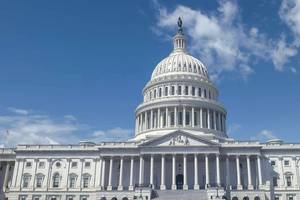
Regardless of whether the Republicans seize or the Democrats maintain control of the House and Senate, there is a guarantee that changes in leadership will occur in some of the key Congressional leadership positions that will impact the maritime industry. Two of the most significant Congressional committees of jurisdiction are the House Transportation and Infrastructure Committee (House T&I) and the Senate Committee on Commerce, Science, and Transportation (Senate Commerce).
-
12 Oct 2022
Congress, GAO Set Their Focus on Cargo Preference Fixes
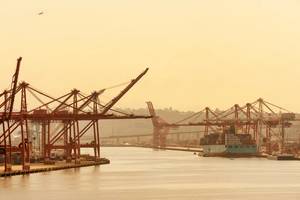
On September 14, 2022, the House Transportation & Infrastructure Committee (T&I Committee), Subcommittee on Coast Guard and Maritime Transportation, held a hearing which indicated a potential revitalization, and new enforcement regime, of U.S.-flag requirements under the Cargo Preference Act of 1954 (the CPA). The hearing occurred on the heels of a Government Accountability Office’s (GAO) report regarding the Maritime Administration’s (MARAD) lack of COA enforcement…
-
07 Apr 2022
Maritime Antitrust Immunity in Crosshairs
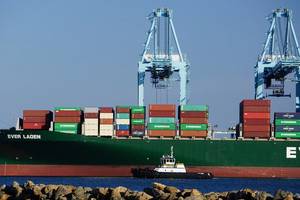
While those in the Beltway continue to struggle to offer solutions to U.S. supply chain capacity issues, it seems apparent that policymakers have at least found their scapegoat for these issues in the form of the maritime industry. A specific talking point during the State of Union Address, a White House-endorsed agreement between the Federal Maritime Commission (FMC) and Department of Justice (DOJ)…
-
01 Nov 2021
Feds Struggle to Address Supply Chain Capacity Issues
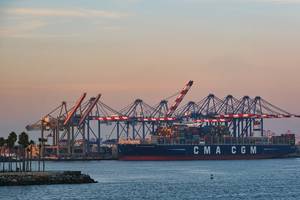
The Biden Administration’s struggles to alleviate supply chain capacity issues appear to be continuing with no end in sight. Part of the issue arises from the Administration’s limited focus on ports and another part arises from Congressional stalemates. Could the much-needed beltway leadership on these issues come in the form of the newly-tapped Maritime Administrator?Biden focuses on ports to address…
-
16 Sep 2021
Prefabrication of Federal Shipbuilding Project Funding
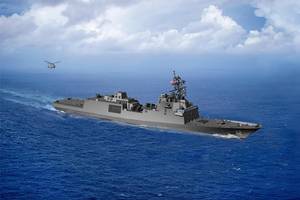
Initial appropriations discussions are underway for Fiscal Year 2022, with a continued focus on federal shipbuilding programs. It has been rough going for the Navy as Congress raised questions about the President’s commitment to the Navy’s long-term shipbuilding program. Meanwhile, House appropriators are seemingly focused on continuing shipbuilding successes at the Maritime Administration and Coast Guard. With billions of dollars in the balance, the U.S.
-
25 Aug 2021
Dredging Up Federal Funding for Inland Ports and Waterways

All signals from Washington, D.C., indicate that Fiscal Year (FY) 2022 could be a record-breaking year for inland port and waterway investment. The successful opening of the Harbor Maintenance Trust Fund, a recording-breaking United States Army Corps of Engineers (USACE) budget request, positive improvements to the Port Infrastructure Development Program, and a possible bipartisan infrastructure deal…
-
01 Apr 2021
Ready Your Salad Fork for Biden’s Offshore Energy Plans
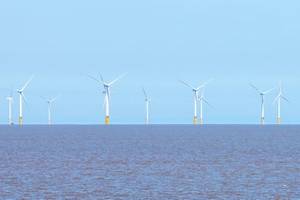
In Antony and Cleopatra, Shakespeare coined the phrase “salad days” to mean a youthful time filled with unbridled enthusiasm and idealism. Indeed, youth, much like salad, is often raw, flavorful and most of all… green. Therefore, it is fitting to think of our present time as the salad days of offshore energy in the United States. Let’s dig in.Executive Order appetizersOn January 27, President Biden…
-
08 Mar 2021
Washington Watch: Winds of Change in DC

For operators venturing into the offshore wind space, 2021 started off with a gust of changes and reports. From Jones Act clarifications and new enforcement authorities, to millions in port infrastructure funding, the new Congress and presidential administration will have plenty of tools available to shape the future of the industry’s development.NDAA brings Jones Act changesOne of the most persistent questions that has hung over the development of the U.S.
-
02 Dec 2020
Streamlining and Simplifying US Government Guaranteed Vessel Financing

The Maritime Administration (MARAD) has taken several steps to streamline and simplify the Federal Ship Financing Program under Chapter 537 of Title 46 of the U.S. Code (commonly referred to as Title XI). The Title XI program provides for a full faith and credit guarantee by the United States government to promote the growth and modernization of the U.S. merchant marine and U.S. shipyards. The Title XI Program supports U.S.
- 1
- 2


